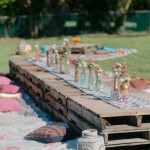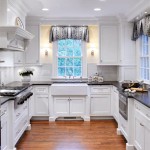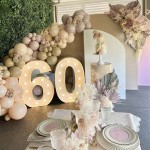Enhancing Outdoor Spaces: Garden Decor Ideas
Outdoor spaces represent an extension of the home, offering opportunities for relaxation, entertainment, and connection with nature. Decorating a garden allows for personal expression and the creation of an inviting atmosphere. The selection of suitable garden decor requires careful consideration of factors such as personal style, available space, budget, and desired functionality. This article explores various outdoor garden decor ideas, providing insights into how to transform a simple yard into an aesthetically pleasing and functional outdoor living area.
Defining the Garden's Style and Theme
Before implementing any decor, it is crucial to define the overall style and theme of the garden. This foundational step ensures cohesion and prevents a haphazard collection of unrelated items. A garden's style can range from formal and structured to informal and naturalistic. Consider the existing architecture of the home and the surrounding landscape to create a harmonious flow.
Formal gardens typically feature symmetrical layouts, manicured hedges, and precisely placed ornaments. Materials like stone, brick, and wrought iron are common elements. Informal gardens, on the other hand, embrace a more relaxed and natural aesthetic. They often incorporate winding paths, wildflowers, and less structured plantings. This style leans towards organic materials such as wood, natural stone, and terracotta.
Thematic gardens provide another avenue for creative expression. Examples include: a Japanese garden with carefully positioned rocks, bamboo, and water features; a Mediterranean garden with drought-tolerant plants, gravel pathways, and terracotta pots; or a cottage garden overflowing with colorful flowers and charming accessories. Selecting a theme allows for a focused approach to decor, ensuring that all elements contribute to a unified vision.
When selecting a style or theme, it's essential to consider personal preferences and lifestyle. A low-maintenance garden might be preferable for individuals with limited time, while those who enjoy gardening might opt for a more elaborate and demanding design. Furthermore, local climate conditions should influence plant selection and material choices to ensure long-term sustainability.
Integrating Functional and Decorative Elements
Effective garden decor seamlessly blends functionality and aesthetics. Items that serve a practical purpose can also enhance the visual appeal of the space. Consider incorporating seating areas, lighting solutions, water features, and storage options that contribute to both the usability and beauty of the garden.
Seating is a fundamental element of any outdoor living space. Benches, chairs, and tables provide comfortable areas for relaxation and socializing. The material of the seating should be durable and weather-resistant. Options range from classic wooden benches to modern metal furniture and comfortable wicker sets. Cushions and throws can add extra comfort and a touch of style. Strategic placement of seating areas can also define different zones within the garden, such as a dining area or a quiet reading nook.
Lighting is essential for extending the use of the garden into the evening hours. Various lighting options can be used to create different moods and highlight specific features. String lights add a festive and whimsical touch, while path lights provide safety and guide visitors through the garden. Spotlights can illuminate trees, shrubs, or water features, creating dramatic focal points. Solar lights offer an energy-efficient and environmentally friendly lighting solution. The use of timers and sensors can further enhance the functionality and energy efficiency of garden lighting.
Water features add a sense of tranquility and movement to the garden. Fountains, ponds, and birdbaths attract wildlife and create a soothing atmosphere. The size and style of the water feature should be proportionate to the size of the garden. Small fountains are suitable for compact spaces, while larger ponds can become a central feature in a spacious garden. The addition of aquatic plants and fish can further enhance the ecological diversity and visual appeal of a water feature.
Storage solutions are often overlooked, but they are crucial for maintaining a tidy and organized garden. Sheds, storage benches, and decorative containers provide space for storing gardening tools, equipment, and outdoor cushions. Choosing storage solutions that complement the overall style of the garden can help integrate them seamlessly into the landscape. Vertical storage options, such as wall-mounted tool racks, are particularly useful for maximizing space in small gardens.
Utilizing Plants and Containers for Visual Impact
Plants are the cornerstone of any garden, providing color, texture, and life. The selection and arrangement of plants can significantly impact the overall aesthetic of the outdoor space. Containers offer flexibility and allow for the incorporation of plants in areas where in-ground planting is not possible. Combining different plant varieties and container styles can create visually dynamic and interesting displays.
Consider the color palette of the garden when selecting plants. Using a complementary color scheme, such as pairing blues and yellows, can create a vibrant and harmonious look. Alternatively, a monochromatic color scheme, using different shades of a single color, can create a more subtle and sophisticated effect. The use of foliage plants with varying textures and shapes can add visual interest even when flowers are not in bloom.
Plant height and structure should also be considered when planning the garden layout. Taller plants can be used as a backdrop for shorter ones, creating depth and dimension. Grouping plants with similar light and water requirements simplifies maintenance and ensures that all plants thrive. The use of groundcover plants can help suppress weeds and create a seamless transition between different areas of the garden.
Containers offer a versatile way to incorporate plants into various settings. They can be used on patios, balconies, and decks, as well as in garden beds to add height and visual interest. The choice of container material and style should complement the overall design of the garden. Terracotta pots are a classic choice that blends well with many styles, while modern metal or resin containers offer a sleeker and more contemporary look. The size of the container should be proportionate to the size of the plant. Larger containers provide more space for root growth and retain moisture better than smaller ones.
Hanging baskets offer another way to add vertical interest and color to the garden. They can be suspended from trees, pergolas, or porch ceilings, creating a cascading display of flowers and foliage. Trailing plants, such as petunias, impatiens, and succulents, are particularly well-suited for hanging baskets. Regular watering and fertilization are essential for maintaining the health and beauty of hanging baskets.
Consider using vertical gardening techniques to maximize space and create a dramatic visual impact. Trellises, arbors, and living walls provide support for climbing plants, such as roses, clematis, and ivy. Vertical gardens can be used to screen unsightly areas, create privacy, or simply add a touch of greenery to a blank wall. The use of recycled materials, such as pallets or plastic bottles, can transform into creative and sustainable vertical garden structures.
Incorporating Decorative Accessories
Decorative accessories add character and personality to the garden. Statues, garden gnomes, wind chimes, and bird feeders can enhance the visual appeal and create a whimsical atmosphere. The selection of accessories should reflect the overall style and theme of the garden. Overcrowding the space with too many accessories can create a cluttered and distracting look. The key is to choose a few well-placed items that complement the existing landscape.
Statues and sculptures can serve as focal points in the garden. They can be made from a variety of materials, including stone, metal, and resin. The style of the statue should complement the overall design of the garden. Classic statues of mythological figures are suitable for formal gardens, while more contemporary sculptures are better suited for modern or eclectic settings. Statues should be placed in areas where they can be easily seen and appreciated, such as at the end of a pathway or near a seating area.
Wind chimes add a touch of music and movement to the garden. They come in a variety of materials, including metal, bamboo, and glass. The sound of the wind chimes should be pleasant and unobtrusive. The placement of wind chimes should be considered carefully to avoid disturbing neighbors. Hanging them near a seating area or in a sheltered spot can create a relaxing and peaceful atmosphere.
Bird feeders and birdhouses attract wildlife to the garden, creating a vibrant and engaging ecosystem. The type of bird feeder should be chosen based on the types of birds that are common in the area. Providing a variety of feeders and seeds can attract a wider range of birds. Birdhouses provide shelter and nesting sites for birds. They should be placed in a sheltered location, away from predators. The addition of a bird bath can provide a source of fresh water for birds to drink and bathe in.
Other decorative accessories that can enhance the garden include gazing balls, sundials, and stepping stones. Gazing balls reflect light and add a touch of sparkle to the garden. Sundials provide a functional and decorative element, marking the passage of time. Stepping stones create pathways through the garden, protecting plants and preventing muddy feet. The use of natural materials, such as stone and wood, can help blend these accessories seamlessly into the landscape.
In summary, garden decor is a multifaceted endeavor that requires careful planning and execution. By defining the garden's style, integrating functional and decorative elements, utilizing plants and containers effectively, and incorporating carefully chosen accessories, homeowners can transform their outdoor spaces into inviting and aesthetically pleasing extensions of their homes. The key is to create a cohesive and harmonious design that reflects personal style and enhances the enjoyment of the natural environment.

55 Unique Backyard Decor Ideas To Try On A Budget

Outdoor Garden Decor Ideas For Your Home Redfin

30 Cute Outdoor Garden Decoration Ideas You Will Love Engineering Discoveries Decor Front Yard Landscaping Design

Diy Garden Decoration Ideas For Your Yard

Outdoor Decor Ideas The Home Depot

Diy Garden Decoration Ideas 2025 Rustic Decor Backyard Landscaping Fence

400 Best Outdoor Decor Ideas Gardens

Outdoor Living Summer Patio Decorating Ideas Clean And Scentsible

Garden Decor Ideas

21 Patio Decorating Ideas Thistlewood Farm
Related Posts







